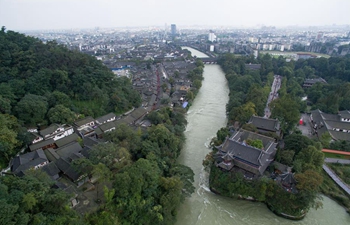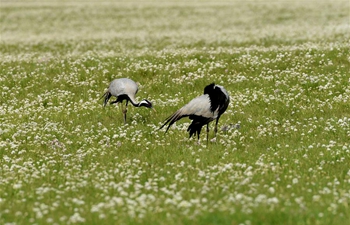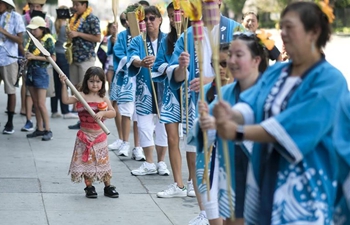LONDON, Aug. 15 (Xinhua) -- Britain's exceptional dry weather in one of the hottest summers for many years has revealed important ancient sites, Historic England said Wednesday.
Aerial views have exposed prehistoric settlements, burial mounds and Iron Age, Bronze Age and Roman farms, said England's official custodians of its heritage.
Their air survey has also revealed neolithic cursus monuments, one of the oldest monument types in England to have been discovered.
"Mysterious Neolithic ceremonial monuments, Iron Age settlements, square barrows and a Roman farm have been newly discovered by Historic England's flying archaeologists who have been surveying the parched landscape from the skies during this spell of prolonged dry weather," said English Heritage.
This summer's heatwave was particularly good for aerial archaeologists as cropmarks form faster and are more obvious when the soil is very dry, the agency's report added, saying the hot weather had revealed thousands of years of buried English history.
Over the past few months, Historic England's archaeologists took to the skies looking for patterns in crops and grass that reveal thousands of years of buried English history.
Duncan Wilson, CEO of Historic England said: "This spell of very hot weather has provided the perfect conditions for our aerial archaeologists to 'see beneath the soil' as cropmarks are much better defined when the soil has less moisture.
"The discovery of ancient farms, settlements and Neolithic cursus monuments is exciting. The exceptional weather has opened up whole areas at once rather than just one or two fields and it has been fascinating to see so many traces of our past graphically revealed."
Damian Grady, Historic England Aerial Reconnaissance Manager said: "This has been one of my busiest summers in 20 years of flying and it has been very rewarding making discoveries in areas that do not normally reveal cropmarks."
Important sites have been revealed in counties across England, stretching from Cornwall to Yorkshire.













